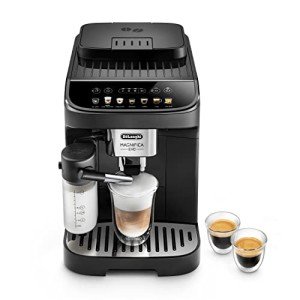Bean to Cup Espresso Machines: The Complete Guide
In the world of coffee fans, the bean to cup espresso machine represents the pinnacle of a quality developing experience. It combines the best coffee beans with innovative developing innovation, permitting users to create café-quality espresso and coffee beverages from the convenience of their own kitchen areas. This post checks out the features, advantages, and drawbacks of bean to cup espresso machines, along with a choice of popular models offered in the market.
What is a Bean to Cup Espresso Machine?
A bean to cup espresso machine is an automatic coffee maker that incorporates the grinder, developing system, and coffee delivery system into one system. Unlike traditional espresso machines that need different grinding equipment and may need manual brewing methods, bean to cup machines grind, brew, and give coffee in simple minutes, making them easy to use and convenient.
Key Features of Bean to Cup Espresso Machines
Here are essential features that consumers ought to consider when looking for the ideal bean to cup espresso machine:
- Built-in Grinder: Freshly ground coffee is vital for an excellent cup. Many bean to cup machines come with an integrated mill that enables users to choose grind size and dosage.
- Adjustable Brewing Options: Quality machines offer personalized settings for developing temperature, coffee strength, and milk frothing abilities, accommodating diverse tastes.
- User-Friendly Controls: Many machines feature intuitive touch screens or LCD display screens for simple navigation between brewing alternatives.
- Automatic Milk Frothing: For those who delight in coffees or lattes, some machines include automatic frothers, permitting creamy and steamed milk at the touch of a button.
- Easy Cleaning and Maintenance: Cleaning systems, such as detachable brewing units and automatic cleansing cycles, are vital for preserving machine health.
Advantages of Bean to Cup Espresso Machines
- Freshness: Since the machines grind coffee beans on demand, customers get the best coffee possible.
- Convenience: With a bean to cup machine, brewing coffee ends up being an uncomplicated procedure, requiring little bit more than the press of a button.
- Adaptability: Many models use a variety of developing options, from espresso to cappuccinos, making them versatile for every single coffee preference.
- Space-Saving Design: By incorporating numerous performances into a compact design, bean to cup machines save counter space.
- Consistency: Automated procedures decrease human error, guaranteeing that every cup of coffee is consistently high quality.
Disadvantages of Bean to Cup Espresso Machines
In spite of their many benefits, bean to cup espresso machines do have some drawbacks:
- Cost: High-quality machines can be expensive, providing a barrier for many prospective purchasers.
- Size: Some models can be bulky, needing adequate counter area.
- Repair and maintenance: While many machines have self-cleaning functions, keeping them and repairing concerns can be made complex and expensive.
- Limited Customization: Compared to standard espresso machines, users might find less control over specific components of the brewing process.
Popular Bean to Cup Espresso Machines
Here is a choice of popular bean to cup espresso machines currently offered in the market:
| Brand & & Model | Mill Type | Milk Frother | Cost Range * | User Rating |
|---|---|---|---|---|
| De'Longhi Dinamica | Burr | Handbook | ₤ 1,200 - ₤ 1,500 | 4.5/ 5 |
| Jura E8 | Conical | Automatic | ₤ 2,200 - ₤ 2,600 | 4.7/ 5 |
| Saeco PicoBaristo | Ceramic | Automatic | ₤ 1,000 - ₤ 1,300 | 4.6/ 5 |
| Breville Oracle Touch | Double Boiler | Automatic | ₤ 2,000 - ₤ 2,400 | 4.8/ 5 |
| Philips 3200 Series | Ceramic | Manual | ₤ 800 - ₤ 1,000 | 4.4/ 5 |
* Prices are approximate and vary by retailer.
Selecting the Right Bean to Cup Espresso Machine
When choosing the right bean to cup espresso machine, customers must consider several elements:
- Budget: Determine just how much you're ready to invest in a machine; this will help narrow down your choices.
- Area: Measure your counter area to make sure the chosen model accommodates your kitchen area layout.
- Preferred Beverage Type: If you favor milk-based beverages, try to find designs with automatic milk frothers.
- Maintenance Preferences: Decide just how much time you're willing to dedicate to cleansing and upkeep.
Frequently Asked Questions (FAQs)
Q1: Do I require any special coffee beans for a bean to cup espresso machine?
A1: While you can utilize any whole coffee beans, medium to dark roast beans often work best for espresso. Freshness matters, so opt for recently roasted beans for optimal flavor.
Q2: Are bean to cup espresso machines simple to clean up?
A2: Many designs include removable parts and self-cleaning functions. Nevertheless, routine upkeep, consisting of descaling, is necessary to keep the machine in leading shape.
Q3: Can I make other coffee drinks besides espresso with a bean to cup machine?
A3: Yes, the majority of bean to cup machines can brew various coffee beverages, including lattes, cappuccinos, and coffee shop au lait, thanks to their built-in developing and frothing capabilities.
Q4: How long do bean to cup machines normally last?
A4: With appropriate upkeep, quality bean to cup machines can last in between 5 to 10 years, depending on use and care.
Bean to cup espresso machines offer an exceptional option for coffee lovers seeking quality, benefit, and versatility in their brewing procedure. While Coffee Machine Whole Beans may be substantial, the capability to delight in newly ground and brewed coffee in your home typically surpasses the costs. Whether you're an espresso connoisseur or just starting your coffee journey, purchasing a bean to cup espresso machine can considerably improve your at-home coffee experience.

